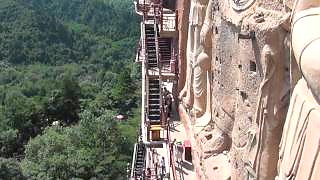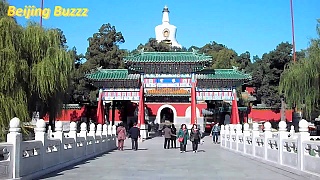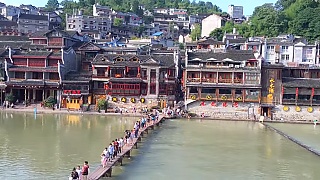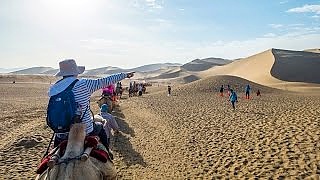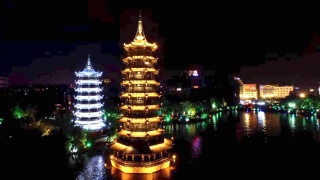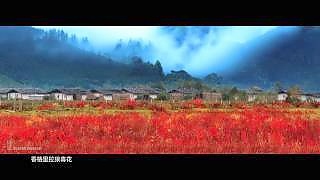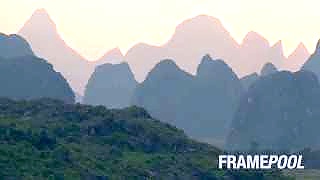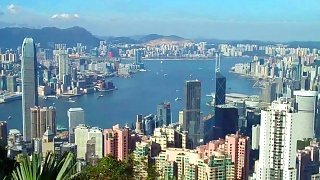Or Tofu, as they say in HK / West.
With chick peas, Shiitake mushrooms, chili oil and SiChuan peppercorns ...
[640],shadow=true,start=,stop=Chili oil ...
Wil Yeung :
Ingredients:
4 dried shiitake mushrooms
2 1/2 cups water
3 sticks green onion
1 cup canned chickpeas
1lb soft or medium firm tofu
2 pieces garlic
1 small piece ginger
1-2 tsp Sichuan peppercorns (or black peppercorns)
3 tbsp chili oil (https://youtu.be/DUDKIcYltZA)
1 tsp chili powder
2 tbsp doubanjiang (Chinese broad bean chili paste)
1 tsp cane sugar
1 tbsp soy sauce
splash of rice vinegar
1 tbsp potato starch + 1 tbsp water
Directions:
1. Place the dried shiitake mushrooms in a small saucepan and add in the water. Cover and bring to a boil
2. Chop the green onion. Roughly crush the chickpeas with a fork
3. When the water comes to a boil, simmer on medium for 10min
4. Drain out the tofu and carefully slice into cubes
5. Pour out and reserve the mushroom water. Cool down the mushrooms with cold water and squeeze out the liquid. Then, remove the stalks from the mushrooms and finely dice
6. Finely chop the garlic and ginger
7. Heat up a sauté pan to medium heat. Toast the peppercorns for 1min. Then, grind down the peppercorn in a pestle and mortar
8. Place the pan back onto medium heat. Add the chili oil
9. Sauté the chickpeas and mushrooms for 1-2min. Add the garlic and ginger and sauté for another minute
10. Add in the chili powder, crushed peppercorn, and the doubanjiang. Give the pan a good stir, then add in the reserved mushroom water
11. Add in the cane sugar, soy sauce, and rice vinegar. Give the pan a stir
12. Make a slurry by combining the potato starch with 1 tbsp water
13. Slowly pour in the slurry while stirring
14. Add in the tofu and gently stir around them
15. Plate and garnish with the chopped green onion
Bonus film - vegan Dan Dan Mian (noodles) ...
[320],shadow=true,start=,stop=Ingredients:
4 broccolini
1 large piece garlic
small piece ginger
2 sticks green onion
1/2 cup canned chickpeas
small bunch canned bamboo
2 tbsp white sesame paste (or tahini)
3 tbsp soy sauce
3 tbsp chili oil (https://youtu.be/DUDKIcYltZA)
1 portion Chinese wheat noodles or udon
1/2 tbsp Sichuan peppercorn
drizzle of grapeseed oil
1 tsp liquid smoke
2-3 tbsp crushed roasted peanuts
1 tbsp white sesame seeds
Directions:
1. Chop the broccolini into bit sized pieces. Finely chop the garlic and ginger. Chop the green onion separating the white part from the green
2. Roughly mash the chickpeas in a small bowl with a fork. Slice the canned bamboo
3. Bring a small pot of water to boil for the noodles
4. Make the sauce by combining the sesame paste, 2 tbsp soy sauce, chili oil, and the green part of the green onions
5. Boil the noodles to package instructions
6. Heat up a sauté pan on medium heat and toast the peppercorns for 45sec
7. Crush the peppercorns in a pestle and mortar. Place the pan back on the heat and drizzle some grapeseed oil
8. Add the garlic, ginger, and green onion
9. Add the broccolini and sauté for 3-4min
10. Add the chickpeas, bamboo, and liquid smoke. Sauté for 4min
11. Add the crushed peppercorns and 1 tbsp soy sauce. Give it a good stir, then turn off the heat. When the noodles are cooked, strain out the water
12. Pour the prepped sauce into the serving bowl
13. Add the noodles into the sauce and top with the sautéed veggies
14. Top with the crushed peanuts and sesame seeds
ORDER YOUR SIGNED VEGAN RAMEN COOKBOOK + GET YOUR FREE E-BOOK + TAKE YOUR VEGAN SUSHI MASTERCLASS HERE:
https://www.yeungmancooking.com













![All restaurants will have dishes to cater for vegans and vegetarians but to be certain there`s no trace of meat or meat oil or egg in your food, head to a specialized vegetarian restaurant. There are quite a few in all major cities but you`ll need to look them up on the net. Some of these are run by devotees, some exist to cater to Buddhist people. Some have `meat substitutes`, such as vegetable based chicken, duck, prawns, etc. , made from things like bean curd and mushroom, and are remarkably good. In these films, Nadine shows us some of what you can eat in BeiJing . . . Hot tip : A great dish you can get at many restaurants is Di San Xian 地三鮮 (literally, `3 things from the earth`) - stir fried potato, aubergine (egg-plant) and green pepper. Mildly spicy, filling, comforting and delicious; a great choice for anyone. Bonus film - a wander through BeiJing and a trip to the Great Wall of China (GuBeiKou and SiMaTai) . . . Plus, some vegetarian Chinese recipes . . . [videogallery id=PLGjygoUcwWPf1FIojEsG9aLCEn6JhhBBD type=playlist c=3 n=9] Vegan and vegetarian dining in China 中国](http://www.beijingbuzzz.com/fd111.jpg)
